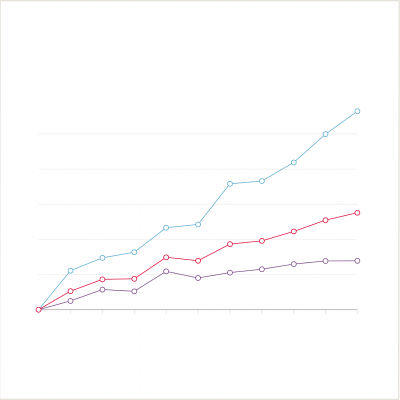Chart: The rise in people living with chronic conditions in Wales
29 November 2016

- Hospital admissions for people with at least one of 12 chronic conditions, which in total accounted for 58% of total inpatient spend in 2014/15, or 72% for those aged 50 and over.
- The percentage of people in Wales living with at least one chronic condition has increased from 5.1% in 2004/05 to 6.5% in 2014/15, an almost 30% increase.
- The percentage of people with multiple chronic conditions has increased substantially – by 56%.

Source: Health Foundation analysis in The path to sustainability.
In our recent report The path to sustainability, we identified hospital admissions in Wales for people with at least one of 12 chronic conditions, which in total accounted for 58% of total inpatient spend in 2014/15, or 72% for those aged 50 and over. The biggest areas of spending are admissions of people with coronary heart disease (CHD) or heart failure, chronic obstructive pulmonary disease (COPD) or asthma, and cancer.
The number of admissions related to these conditions rises every year, in part due to the ageing of the population, as the likelihood of living with a chronic condition rises with age.
The percentage of people in Wales living with at least one chronic condition has increased between from 5.1% in 2004/05 to 6.5% in 2014/15, an almost 30% increase. However the biggest rise is in the percentage of people living with multiple chronic conditions. This percentage has increased by 56% over this 10 year period if you take population growth into account. This is the equivalent of 64% more people living with multiple chronic conditions.
Prevalence of chronic conditions rises with age, however the overall increase seen is over and above what can be explained by the ageing of the population alone, with rising levels of admissions for people with these conditions occurring in all age groups. This growth is a combination of many factors that are hard to separate. Some is a result of increasing prevalence of the conditions, including due to population risk factors, such as the rising rate of obesity, while other factors include rising underlying public expectations of the quality and amount of treatment available. In addition, new technology can both increase the treatment options available and improve life expectancy for people with chronic conditions.
Further reading
Work with us
We look for talented and passionate individuals as everyone at the Health Foundation has an important role to play.
View current vacanciesThe Q community
Q is an initiative connecting people with improvement expertise across the UK.
Find out more

